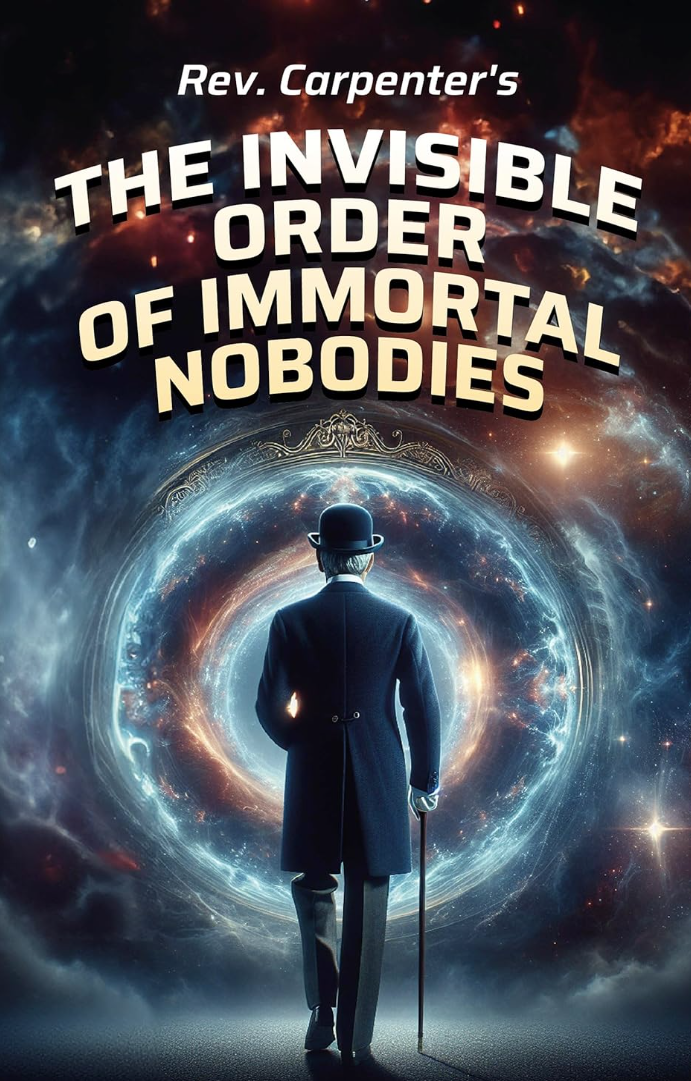
The Collision of Fate and Innovation: A Symbolic and Philosophical Exploration
In a world where magic and technology vie for supremacy, The Invisible Order of Immortal Nobodies unravels a cosmic struggle that transcends mere survival—it is a testament to the eternal conflict between nature and artifice, spirit and machine, ancient wisdom and modern ambition. This is more than a story of heroes battling apocalyptic forces; it is a meditation on the very fabric of existence, where the duality of progress and tradition is put to the ultimate test.
The Fusion of Magic and Technology: A Battle for the Soul
At its core, the collision of sorcery and advanced machinery serves as a metaphor for humanity’s own struggle with the forces of industrialization and spirituality. Technology, often driven by corporate greed in this dystopian landscape, represents the unchecked ambitions of humankind—an attempt to conquer the ineffable with logic and control. Magic, on the other hand, is the lingering vestige of an ancient world, a reminder that not all wisdom can be coded, monetized, or manufactured. The war between these two forces is not just a war of power but a battle for meaning itself.
The Role of Prophecy: Destiny vs. Free Will
Prophecies weave through the fabric of the narrative, acting as both a guiding light and a source of existential conflict. Do the heroes walk a predestined path, or are they architects of their own fate? The presence of prophecy in the story mirrors humanity’s age-old search for purpose, the tension between surrendering to fate and forging one’s own destiny. It raises the question: is knowledge of the future a gift or a curse?
The Demonic Entities: Manifestations of Chaos and Corruption
The monstrous forces of darkness are not merely external threats; they are the embodiments of unchecked power, greed, and moral decay. The demonic entities seeking to consume the world symbolize the encroachment of nihilism and destruction—forces that thrive when balance is lost. Whether they emerge from magic, technology, or the greed of those who wield both, these adversaries serve as reflections of the human condition’s most destructive impulses.
Ahriman and the Corporate Mechanism of Spiritual Enslavement
Ahriman, the ancient force of darkness and materialism, finds his incarnation in Azoth, the CEO of Hegemon, a technocratic empire that seeks to suffocate humanity’s soul. His existence is not simply an act of tyranny but a deliberate strategy to keep humankind in an animalistic state, severed from spiritual development. Azoth symbolizes the ultimate perversion of knowledge—wisdom stripped of its divine essence and repurposed as a tool for subjugation.
By trapping humanity within a purely materialistic paradigm, Hegemon ensures that people remain enslaved to their base instincts: fear, survival, consumption. In this way, Azoth is the architect of a world where human beings are no longer creators of their own destinies but cogs in a vast, unfeeling machine. He represents the final stage of Ahrimanic influence—an existence where souls are no longer free to ascend but are instead locked in an endless cycle of servitude to a power that denies the very notion of transcendence.
Elemental Allies: The Forgotten Guardians of Balance
In contrast to the dystopian elements of the world, the presence of elemental beings suggests a harmony lost in the wake of progress. They serve as manifestations of nature’s resilience, forces that remind humanity that destruction is not the only path. Their alliance with humans signifies a rekindling of ancient bonds, an understanding that true strength lies not in dominion over nature, but in coexistence with it.
The Ragtag Heroes: Defying the Impossible
The unlikely band of protagonists is more than just a collection of misfits—they are the archetypal rebels against an impending doom, figures who embody the indomitable spirit of resistance. In their defiance against seemingly omnipotent forces, they mirror the mythological tricksters, warriors, and sages of old who stood against the collapse of order. Their journey is one of transformation, not only for themselves but for the world they fight to save.
Conclusion: The Struggle for Universal Truth
In the end, The Invisible Order of Immortal Nobodies is more than a whirlwind of action and mysticism; it is a reflection of our own world’s precarious state. The war between magic and technology, prophecy and free will, greed and wisdom, is not just fiction—it is an allegory for the very forces shaping our reality. It challenges us to ask: In the face of impending chaos, do we submit to destruction, or do we rise, against all odds, to reclaim the balance that sustains existence itself?

Leave a Reply